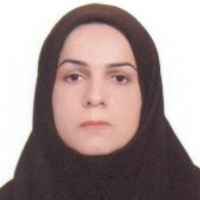Evaluation of nutrition value of produced fish cheese from silver carp
Evaluation of fish and seafood markets in Iran show that people have little interest to consume fish, despite the fact that fish consumption in developed countries is the rapid growth. However, despite the significant sources of demand for fish consumption of fish is generally seasonal. One of the problems consumers clean and ready to cook the fish, which need to experience and time, although it is common for all the fish, but the warm water cultured fish is more important, therefore, must be programmed in such a way that the fish are supplied all year. The fish processing provides the possibility that fish that are produced in a limited time and gradually throughout the year are marketed. Due to high production of warm water fish and using of small-scale and traditional methods for processing of fish such as salting and smoking, is necessary to use from modern processing methods for production of high quality of fishery products from fish particularly warm water fish such carp, silver carp, grass carp and big head. In 2004, a joint project with title "improvement of silver carp processing and production of different products from fish" was signed between Iranian Fisheries Science Research Institute and Rivo Institute and Wageningen university of Netherlands. According to the project 7 sub projects were defined that including: quality of fish sausage, fish cheese, fish snake, fish ball, fish ice cream, trimming machines for production of fish fillet and pin bone machines for production of deboned fillet. Two main objectives of the project were production of high quality of fish fillet with low fat and bone and development of various products from silver carp for introduce to market. Fish Cheese is produced from coagulation of soluble proteins (sarcoplasmic proteins) of fish. The aim of this study was to extraction and precipitatation of sarcoplasmic proteins of silver carp (Hypophthalmichthys molitrix) and its use in fish cheese formulations.
After washing, the fish was beheaded, gutted, and again washed and bones were manually separated. Fish fillets were grained and prepared for surimi production. Minced fish were washed three times in 10 ° C water (1 to 4 w/v) for 15 minutes, and the third stage was rinsed in the brine (0.3%). For coagulation and concentration of sarcoplasmic proteins were used from acetic acid (5%) and centrifuge in 5000 rpm for 15 minutes respectively. At the end of the process the sugar and sorbitol, (each in the amount of 4%) and tri sodium polyphosphate was used in the amount of 0.3%. Proximate composition (total protein, total fat, moisture and ash) and chemical parameters (peroxide value (PV) and total volatile base nitrogenTVB-N) and microbial analysis (total viable counts) were examined for three forms of fish (minced fillets, concentrated protein and fish cheese). All examinations were done as standard methods for food analysis.
The results indicated that mean of lipid, ash, moisture and protein in minced silver carp were %2.71, %79.44,, %0.91, %16.90 and in sarcoplasmic protein concentrated were %16.90, %1.16, %81.97, %0.42 and in fish cheese were %16.41, %28.01, %48.41, %3.46, %17/50 respectively. The best formula was treatment of 15 with %22/26 of protein. Mean of TVN and PV in minced fish, primary protein paste and fish cheese were, 11.32 mg/100, 1.51 meqo/kg and 13.63 mg/100, 3.65 meqo/kg and 15.03 mg/100, 5.38 meqo/kg respectively. The results indicated that mean total bacteria count was in minced meat 7.2 × 104per grams was the lowest (1.1×103) and highest (5.4 ×104), respectively. The mean total count of bacteria in fish protein concentrated sarcoplasmic 3.1 × 104 g, which is the lowest number (1.8×103), and the highest number (5.2 ×104), respectively. The mean total count of bacteria in cheese, fish 8/1 × 103 per gram was the lowest number (5.8×103), and the highest number of (4×104). Total count of bacteria in three of the treatments showed that the number of bacteria in the range of 4 logs, and the final product slightly decreased (in some treatments). Changes in the number of microbes in the products depend on two factors such as time - temperature and the temperature are lower and therefore faster processing time will count as standard.
According to the results, the product production of sarcoplasmic proteins silver carp namely fish cheese the quality parameters, indicators of chemical and microbial spoilage in a range of reference standards can be used as a new product made silver fish with different formulations, in the diet However supplemental tests including organoleptic criteria for the evaluation of the physical properties of the product is necessary.
- حق عضویت دریافتی صرف حمایت از نشریات عضو و نگهداری، تکمیل و توسعه مگیران میشود.
- پرداخت حق اشتراک و دانلود مقالات اجازه بازنشر آن در سایر رسانههای چاپی و دیجیتال را به کاربر نمیدهد.



